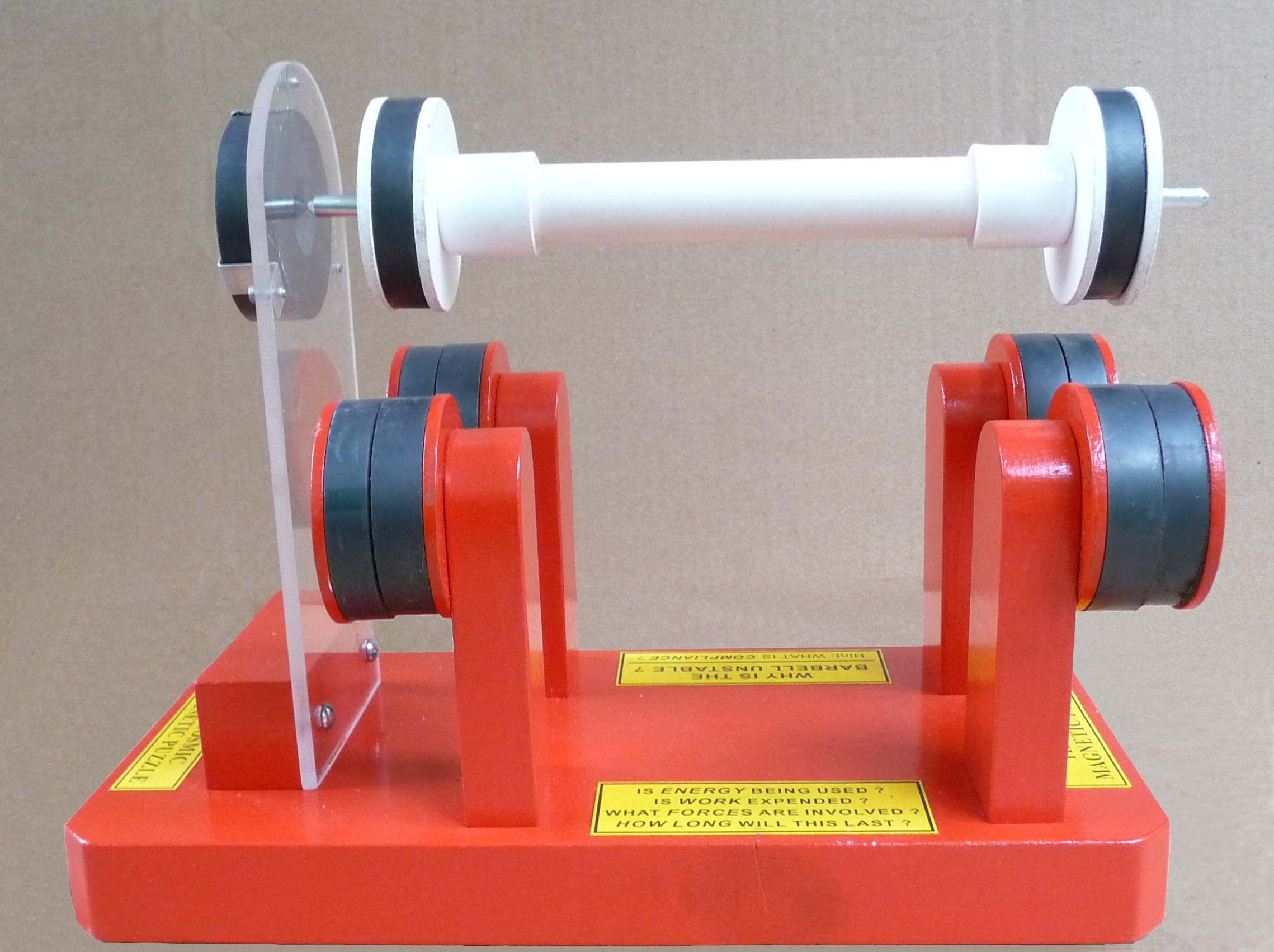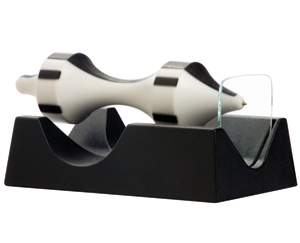 by: Martin Sagendorf
by: Martin Sagendorf
We often think we see forces. However, in reality, we only see the results of forces. To understand forces we must believe in Newton’s Third Law. It states that all forces can only exist in opposite pairs and be equal in magnitude. And… what is very interesting is that Newton’s Third Law does not stipulate that the forces be of the same kind.
Also, by Newton’s Second Law: If the (net) forces are equal, there will be no accelerations (Fnet = ma = 0)… in other words… equal and opposite (net) forces create a state of equilibrium. An interesting example of equal and opposite (and unlike-type) forces is that exhibited by a combination of opposed magnetic fields within a gravitational (force) field. These two different (types) of fields interact purely as ‘force fields’ – only their forces matter… not their types.
The Cosmic Magnetic Puzzle exemplifies a combination of such forces: a barbell containing two ‘donut’ magnets supported in mid-air above stationary pairs of magnets – with an additional pair of donut magnets maintaining the horizontal location of the barbell.

 If you don’t feel like building this apparatus, there are commercially available products that demonstrate this concept at a smaller scale. Educational Innovations carries the Revolution Top, which has flashing led lights that also demonstrates persistence of vision.
If you don’t feel like building this apparatus, there are commercially available products that demonstrate this concept at a smaller scale. Educational Innovations carries the Revolution Top, which has flashing led lights that also demonstrates persistence of vision.
The Revolution Top Illustrates:
- Attracting Magnetic Forces
- Repelling Magnetic Forces
- Balanced Magnetic Forces
- Gravitational Force
- Two Balanced Forces
- The Concept of Energy
- The Concept of Work
- The Concept of Equilibrium
And Asks:
- Will this work in space?
- How long will it work?
- How are the magnets’ pole faces arranged?
Guidelines for building the Cosmic Magnetic Puzzle are detailed in the book Physics Demonstration Apparatus. This amazing book is available through Educational Innovations and includes ideas and construction details, including all equipment necessary, for the creation and use of a wide spectrum of awe inspiring physics demonstrations and laboratory equipment. Included are 49 detailed sections describing hands-on apparatus illustrating mechanical, electrical, acoustical, thermal, optical, gravitational, and magnetic topics. This book also includes sections on tips and hints, materials sources, and reproducible labels.